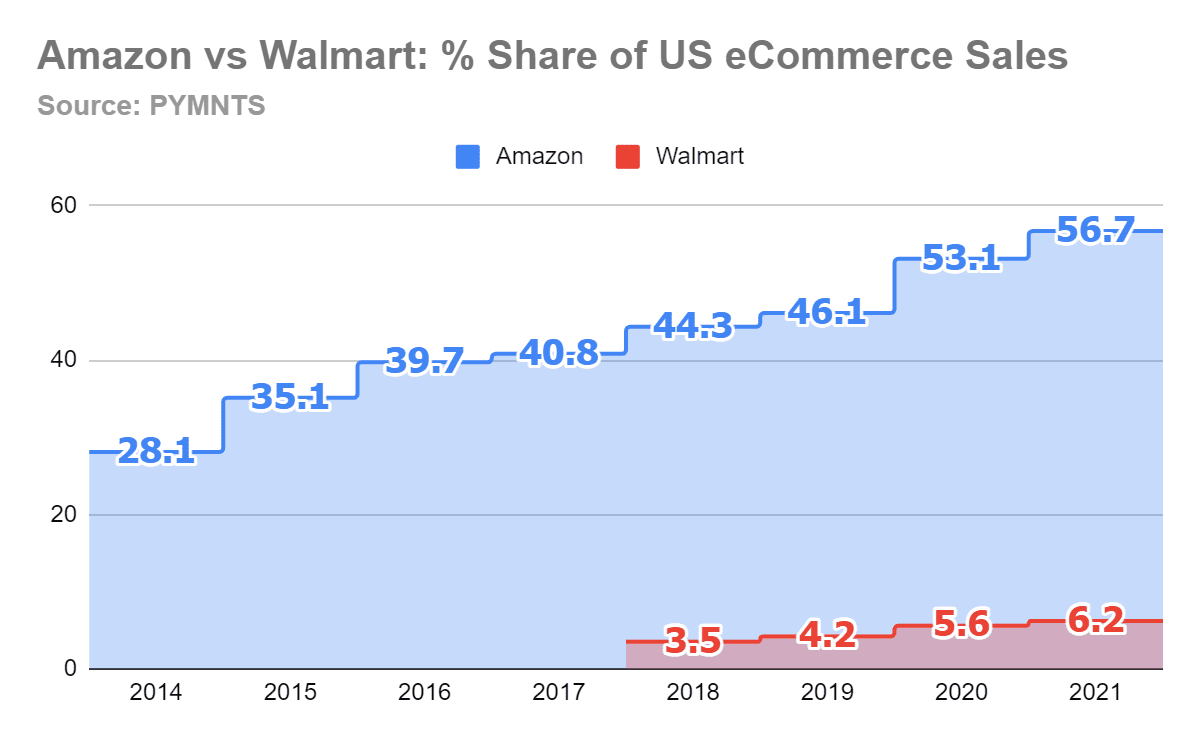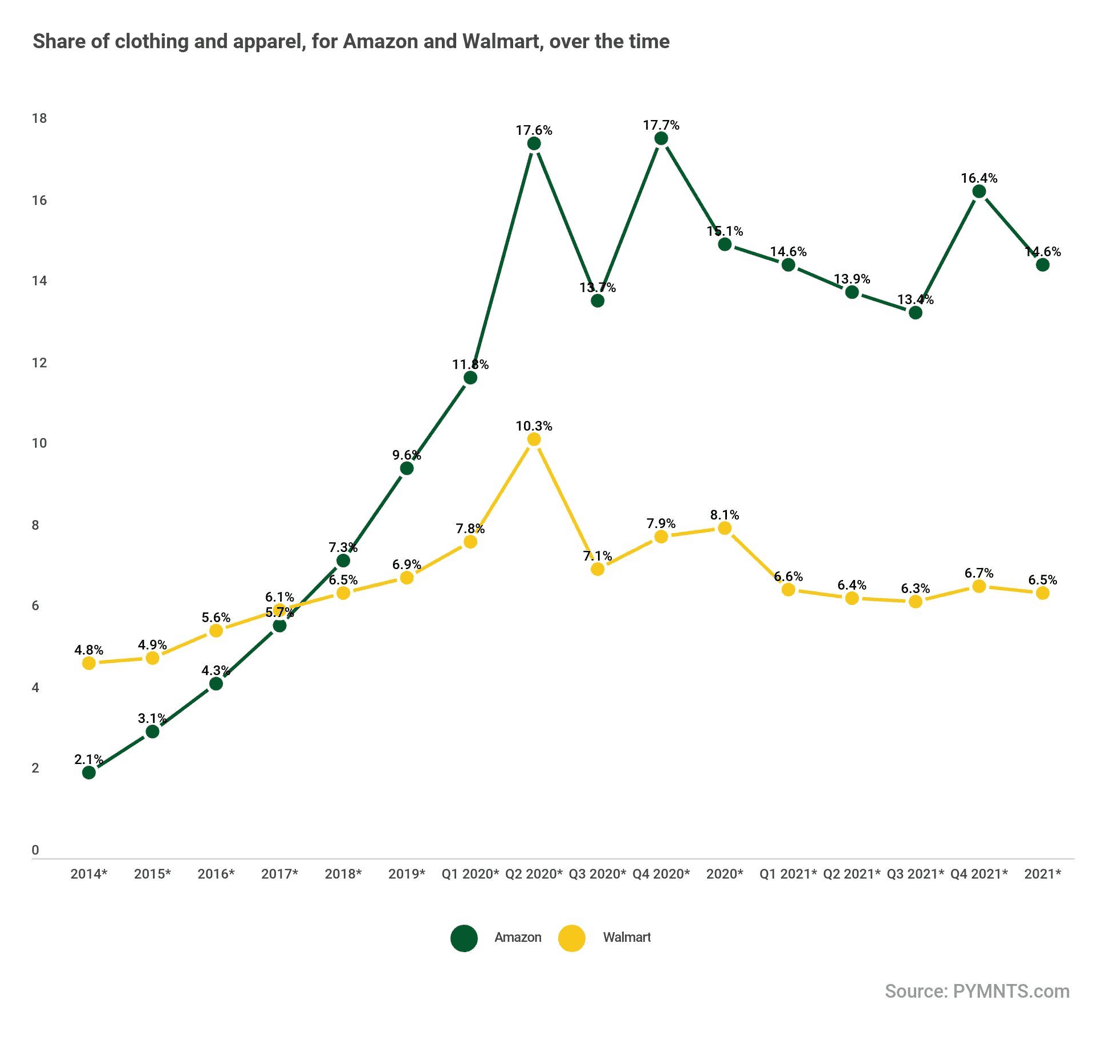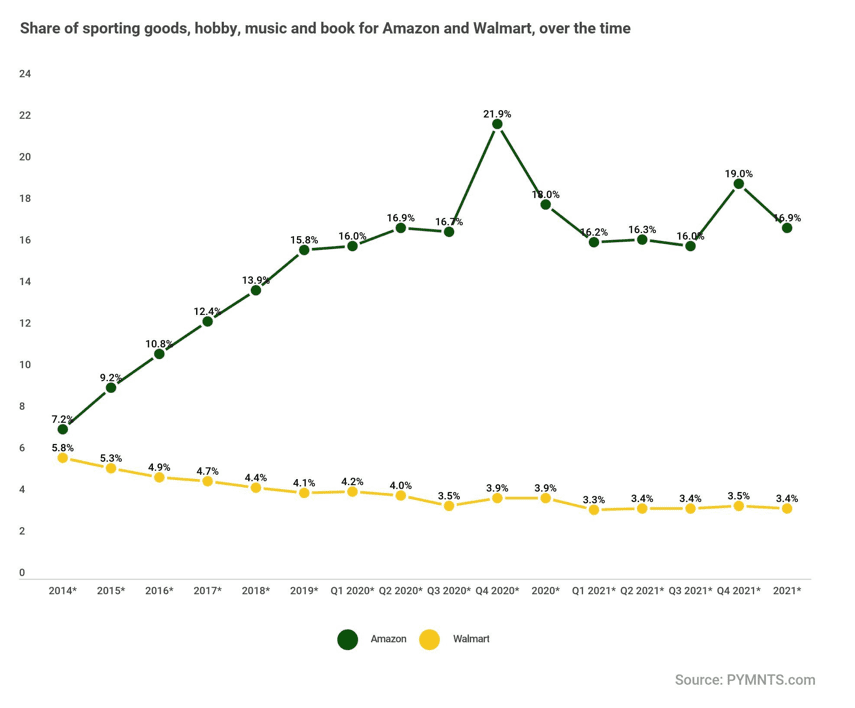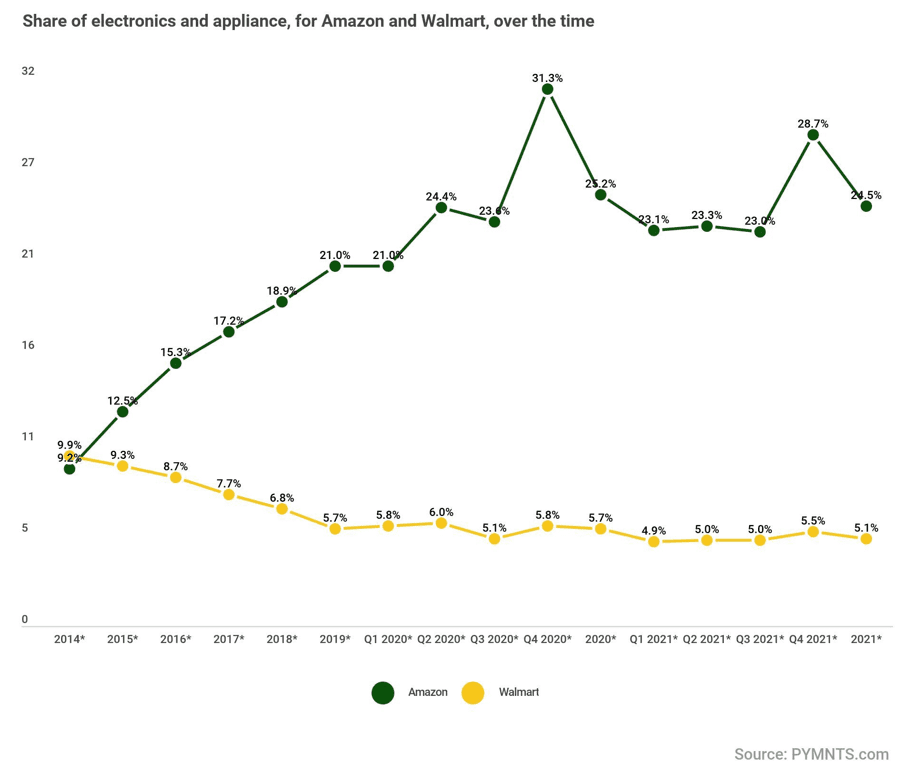Nearly 60% of all online retail purchases in the U.S. were done on Amazon last year, new PYMNTS data show, reflecting the company’s tightening grip on eCommerce sales and a continuation of the stair step market share advance it has made over the past twenty years.
In fact, the new findings defy the logic that says it gets harder to grow a large business, having doubled its share of the domestic retail piece to 56.7% in 2021 from 28.1% in 2014.
In calculating Amazon and Walmart’s respective slice of the overall and digital retail sales pies, PYMNTS uses a gross merchandise value method which backs out things like revenue from Amazon Web Services but includes the full dollar value of everything sold, even when an item is sold and fulfilled for a third party for a 10-15% selling commission.

The findings also show how much Amazon is dominating Walmart when it comes to online-only sales, having added over 3 ½ percentage points to its share of digital sales last year, completing a 10-percentage point COVID-era jump since 2019.
By comparison, during that same 2-year pandemic period, Walmart’s share of domestic digital retail sales has grown nearly 50% — albeit off a much smaller base — ending 2021 with a 6.2% portion.
Advertisement: Scroll to Continue
Said another way, despite all of Walmart’s efforts and the investments it has made to grow its eCommerce sales and diversify its traditional reliance on the 5,000 physical store locations that dot the country, the digitally-native Amazon still holds nearly a 10x lead over its rival on this front.
The Online Advantage
Amazon’s eCommerce advantage is significant on many fronts, not least of which is the fact that, as PYMNTS reported last week, it has now pushed the online giant into the lead for the first time, with its share of total U.S. retail sales (which includes both in-store and online activity) growing to 9.4% versus Walmart’s 8.6% stake.
See more: Amazon Now Ahead of Walmart in Share of Retail Spending New PYMNTS Data Show
This digital dominance is also important because of the ongoing — and accelerating — digital shift that is happening in retail where eCommerce now accounts for about 15% of total retail activity.
That said, the growing embrace of omnichannel selling could be the great equalizer, as consumers and corporations alike increasingly browse, buy and attain their goods in numerous ways other than delivery-to-doorstep — and as physical stores have taken on an increasingly crucial role in the fulfillment of orders.
Read the Full Story Here: Walmart Says ‘Business Is Increasingly Digital’
Last month, for example, Walmart CEO Doug McMillion said on the company’s earnings call that the retailer’s business model is changing,
“Our stores have become hybrid. They’re both stores and fulfillment centers,” McMillon said, noting the 170% increase in the number of orders filled by stores last year, which followed a 500% jump the year before. “Having inventory so close to so many customers is a competitive advantage,” McMillan added.
Amazon’s Big 3
As much as Walmart still dominates the Food & Beverage category with an exponential 18.6% share compared to its rival’s 1.9% slice of the grocery business, that is not the case in three key segments where Amazon dominates eCommerce in the United States: Clothing & Apparel, Sporting Goods, Hobby, Music & Books, and Furniture & Home Furnishings.
Although both retailers lost ground on the market share front in clothing last year as pure-play apparel rivals and other competitors grabbed a larger slice, Amazon’s 8-percentage-point lead over Walmart is formidable. Officially, PYMNTS data show Amazon and Walmart ended 2021 with respective shares of 14.6% and 6.5% in the Clothing & Apparel category.

A similar market share margin was also experienced in the vast Sporting Goods, Hobby, Music & Books category, which is one of Amazon’s “top-3” revenue drivers but is a “bottom 3” contributor for Walmart.
As the chart below shows, Amazon’s ending 16.9% share slid from 18% in 2020 — but it is still more than 5x larger than Walmart’s current 3.4% stake, which has been drifting lower since 2014.

Finally, perhaps most dominant of all, is the share-gap seen in Electronics & Appliances between Amazon and Walmart, which widened to 24.5% versus 5.1% as of the end of 2021, PYMNTS data show.
It is worth noting that this huge and widening margin did not always exist — and that less than 10 years ago the two retailers were tied on this front.
In terms of importance, this top segment generated $108 billion in revenue for Amazon last year, PYMNTS research shows, which amounts to about 21% of its total sales. By comparison, Electronics & Appliances amounted to roughly 5% of Walmart’s total sales.


